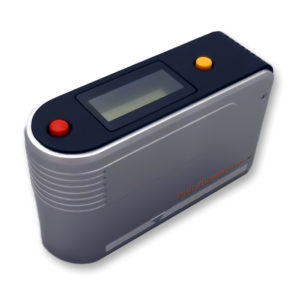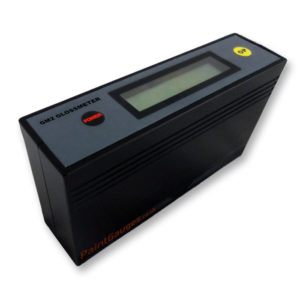Gloss is an important aesthetic characteristic that can be quantitavely measured. Gloss meters facilitate this quality control process.
What is gloss?
Gloss is defined by NIST as the perception by an observer of the shiny appearance of a surface. It is a measure of the reflective characteristics of a surface and is important in visual appearance. More specifically, it is a measure of the level of specular reflection of a surface. Lower gloss surfaces have a higher level of diffuse reflection.
What affects gloss level?
The finish and texture of a surface are significant factors in determining gloss level. A smooth surface will have a higher gloss level than a textured or rough surface. Material type is also relevant, as it can determine how much incident light is absorbed into a material versus being reflected. For example, plastics tend to absorb more light than metals. Additionally, transparency and substrate (if applicable) can affect gloss levels.
How is gloss measured?
A gloss meter will shine a beam of light of determined intensity at a surface at a prescribed angle and a sensor in the meter will detect how much of that light is reflected by the surface. Surfaces with lower levels of specular gloss reflect the light in a more diffuse pattern. The gloss meter will then calculate the gloss level of the surface in Gloss Units (GU).
What is a Gloss Unit?
A Gloss Unit is a measure of the light reflected by a surface versus that incident upon it. The reference material is a piece of polished black glass with a refractive index of 1.567.
How do gloss levels differ?
Different surfaces and materials exhibit different levels of gloss. For example, polished metals and glass have high levels of gloss whereas wood and cardboard have low levels of gloss.
Which measuring angle should be used?
If a gloss reading is over 70GU (i.e. relatively high gloss) at 60° then a reading at 20° is often selected to achieve enhanced differentiation. If a gloss reading is below 10GU (i.e. low gloss) at 60° then a reading at 85° is often selected to achieve enhanced differentiation. Our GM2 gloss meter has the capability to measure at all three of these angles simultaneously.
What are some precautions to note when measuring gloss levels?
- The surface should be free from dust or debris.
- The lens of the gloss meter should not be contaminated with dust, debris or grease. In order to assist in this, a protective cover should be kept on the base of the gloss meter when not in use and the meter kept stored in its case. Likewise, fingers of implements should be kept away from the light and sensor unit of the meter.
- The calibration tile for the gloss meter should not de damaged or scratched and should be clean and free from debris, dust or grease.
- The gloss meter’s light and sensor unit aperture should be free of intruding ambient light when a reading is taken.
-
 GM1 Gloss Meter£249.99
GM1 Gloss Meter£249.99 -
 GM2 Gloss Meter£379.99
GM2 Gloss Meter£379.99
